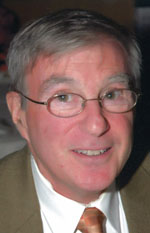Ashkenazi Herbalism: Rediscovering the Herbal Traditions of Eastern European Jews, Deatra Cohen and Adam Siegel, North Atlantic Books, Berkley, CA, ©2021, ISBN 978-1-62317-544-3, p. 259, plus appendices, glossary, notes, bibliography, and index, $24.95.
By Fred Reiss, Ed.D.

WINCHESTER, California – Wait, it’s not the chicken soup, it’s the herbs that count! Eastern European Jewry, particularly those living in the area known as “The Pale of Settlement,” on the western side of the Dnieper River, in present-day Ukraine, whose history there began in the Middle Ages, have a “long and distinguished canon dedicated to the healing process,” a research area unfortunately ignored, by-and-large, by sociological scholars. Cohen and Siegel, in their joint venture Ashkenazi Herbalism, describe the history and role of plants and herbs employed by Ashkenazi folk-healers, piecing together sparse, fragmented sources, and weaving them into an engaging story.
Beliefs about the causes of disease and illness differ today than in the past. Modern societies generally accept that germs cause many diseases. In the Hebrew Bible, priests determined, for example, if someone had leprosy because an outward appearance of this disease presented proof of inner sin and godly punishment. Later, in premodern Eastern Europe, people interpreted sickness—nausea, cheat pains, headaches, etc.—arising from supernatural forces, such as, evil spirits, witchcraft, the casting of spells, and the so-called “evil eye”.
The first part of Ashkenazi Herbalism explains the meaning of herbalism and tells the story of herbal and magico-religious medicine in the Pale of Settlement, and their applications to the Jewish concept of pikuach nefesh, saving a life. Cohen and Siegel describe community roles and tasks of numerous classes of folk-medical practitioners, including, itinerant kabbalists known as the Ba’alei Shem, dispensing curative herbs and acting as religious healers through amulets and incantations; early Jewish physicians trained in schools abroad; apothecaries, providing preformulated medicines, in addition to plants, roots, and incense; and feldshers, military barber-surgeons who returned home to practice medicine. We also learn how the eighteenth-century European Enlightenment “began to chisel away at age-old traditions” in the Pale, coincident with the rise of modern physicians and hospitals. Yet, Jewish folk-medical practices did not die out.
Ashkenazi Herbalism also shines a bright light on the little-chronicled role of woman in folk-medicine, who not only practiced the magico-religious arts, such as exorcism, but also prescribed herbs, potions, and salves. They were adept at midwifery and as lamenters and mourners for hire. Cohen and Siegel note a dichotomy in the transmission of medical knowledge between the two groups: Men wrote and studied books; women passed their knowledge orally, often to their daughters, resulting in a dearth of and eventual disappearance of this home-grown wisdom.
Cohen is an herbalist and her familiarity with the subject is apparent in part two, which offers extensive portrayals of 26 plants employed by Jewish folk-medical healers in the Pale between the two world wars. Each narrative includes a pen-and-ink drawing of the plant together with its physical description and name in multiple languages, historical usages as a remedy in both Eastern and Western Europe and in contemporary societies, as well as in the Ashkenazi communities of the Pale.
Ashkenazi Herbalism clearly communicates the presence of a “deep and wide body of healing knowledge from which Ashkenazi folk healers drew on to care for their families and, by extension, the larger local population.” Ashkenazi Herbalism is neither bubbe’s chicken soup, nor zayde’s guggle-muggle—no cures; no recipes here, just a readable accounting of how Ashkenazi Jews in the Pale of Settlement called on age-old medical wisdom to survive sickness, disease, malevolent spirits, and human agents of the supernatural.
*
Fred Reiss, Ed.D. is a retired public and Hebrew school teacher and administrator. His newest book is The Jewish Calendar: History and Inner Workings, Fourth Edition. He may be contacted via fred.reiss@sdjewishworld.com.